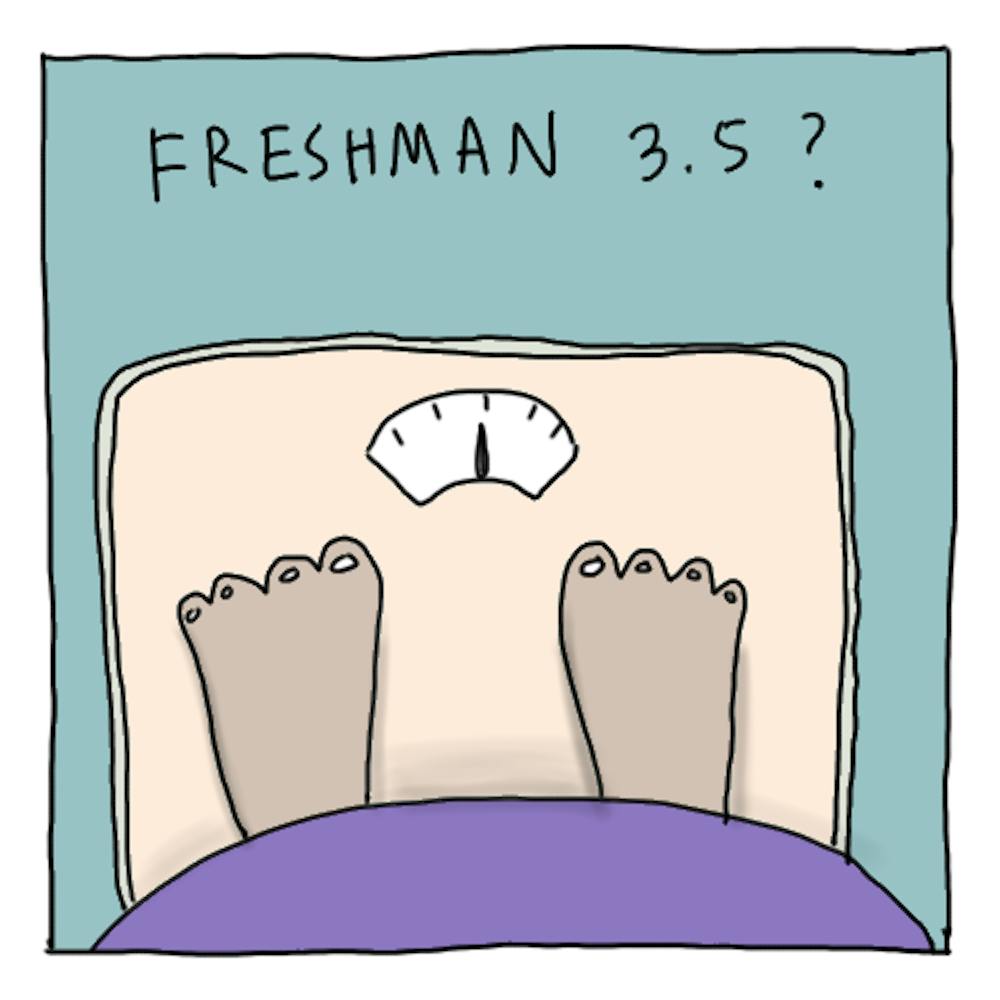For incoming freshman, the threat of the dreaded “Freshman 15” can cause anxiety and stress. For junior Brenagh Sanford, a misunderstanding of the dreaded Freshman 15 lore magnified her anxiety.
“I thought it was the ‘Freshman 45,’” Sanford said. “I was really scared to come to college.”
It turns out she wasn’t the only freshman who was misinformed. A study, “The Freshman 15: A Critical Time for Obesity Intervention or Media Myth?” by Jay L. Zagorsky and Patricia K. Smith, busted the myth by finding that, on average, freshmen gain between two-and-a-half to three-and-a-half pounds during their first year at college. Rather than putting on 15 pounds in one year, students gain weight gradually over their four-year college career; around seven to nine pounds for women and 12 to 13 pounds for men.
Campus dietician Valerie Edwards knows from her own research and experience that the Freshman 15 is a myth.
“It’s so much in our popular culture that everyone’s terrified,” Edwards said. “I see a lot of people who are really worried about gaining weight.”
The term was first coined in the September 1989 issue of Seventeen Magazine, giving advice on “Fighting the Freshman 15.” Since then, the term and the anxiety that comes with it have permeated popular culture.
For many students, this anxiety may stem from changes the move to college brings, such as the transition from home-cooked meals and organized activities to managing personal meals and exercise plans.
“I came from dancing 20-plus hours a week in high school and then swam on a swim team too,“ Sanford said. “I have always been super active, but it’s always been planned activities.”
For freshman Francis Stretch, the transition from home-cooked meals to dorm room and campus food has been difficult.
“It’s like having to do it myself, and not wanting to go through the whole process of thinking what I want and making it,” Stretch said.
Despite the stress of this change, Edwards sees college as an opportunity to establish a healthy, balanced lifestyle. This includes balancing nutrition and exercise with school and work in a way that cultivates a healthy lifestyle during and beyond college.
According to Edwards, the pay-per-item system at the Bauccio Commons and The Cove may contribute to healthier Pilots. The system leads some students to consider the foods and portions they choose before buying. For some, including Sanford, it may be one of the deciding factors when it comes to choosing UP over other schools with an all-you-can-eat model.
“My other top choice was Carroll College … they have buffet style,” Sanford said. “But here, coming in and having to buy everything, that’s going to make me pick and choose instead of having everything.”
However, freshman Madison Case still sees the ease and availability of food as a difficulty.
“I feel like I’m eating more now because the portion sizes are huge,” Case said. “It’s just easy to get food and I don’t have to cook it, it’s just right there.”
Despite the debunked myth of the Freshman 15, Edwards said it is important for students to build healthy nutrition and exercise habits. The Health Center is one place for students to get information and evaluate their habits.
“We try to focus more on is your eating in balance, is it going in an extreme, one way or another?” Edwards said. “And how can we find balance in that? We just try to be holistic about it.”








